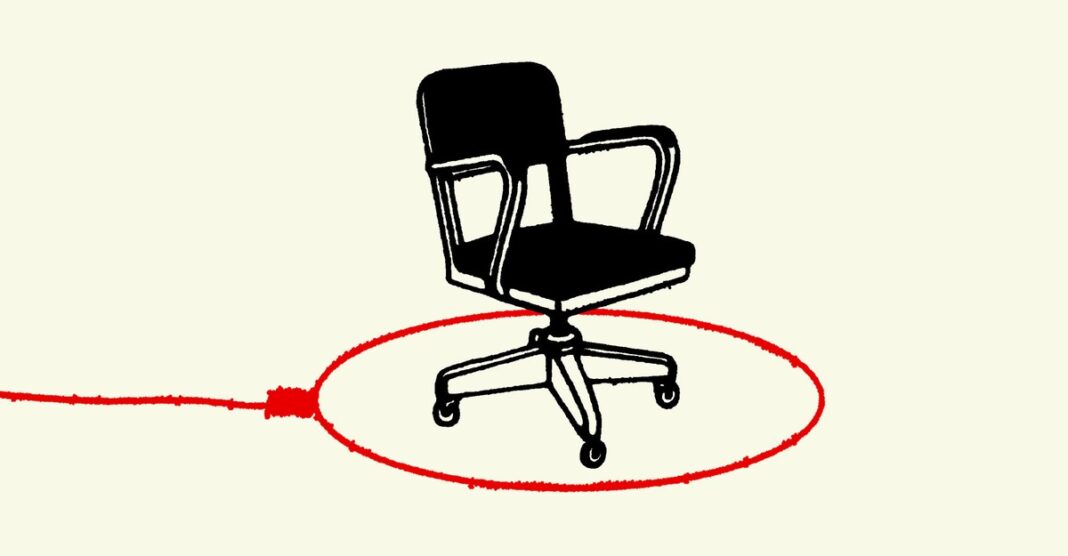More than a year since the World Health Organization declared the end of the pandemic public-health emergency, you might expect the remote-work wars to have reached a peace settlement. Plenty of academic research suggests that hybrid policies, which white-collar professionals favor overwhelmingly, pan out well for companies and their employees.
But last month, Amazon CEO Andy Jassy announced that the company’s more than 350,000 corporate employees must return to the office five days a week come January. In a memo, Jassy explained that he wants teams to be “joined at the hip” as they try to out-innovate other companies.
His employees don’t seem happy about it. The Amazon announcement was met with white-collar America’s version of a protest—a petition, angry LinkedIn posts, tense debates on Slack—and experts predict that some top talent will leave for companies with more flexible policies. Since May 2023, Amazon has allowed corporate employees to work from home two days a week by default. But to Jassy, 15 months of hybrid work only demonstrated the superiority of full-time in-office collaboration.
Many corporate executives agree with him. Hybrid arrangements currently dominate white-collar workplaces, but a recent survey of 400 CEOs in the United States by the accounting firm KPMG found that 79 percent want their corporate employees to be in the office full-time in the next three years, up from 63 percent the year before. Many of America’s executives have had enough of the remote-work experiment, and as the Amazon announcement suggests, some are ready to fight to end it. They seem to be fighting not only because they believe that the evidence is on their side, but also because they long to return to the pre-pandemic office experience. (Management professors even have a name for this: “executive nostalgia.”) Quite simply, they are convinced that having employees in the office is good for business—and that having them in the office more is even better.
Managers have some empirical basis for preferring in-person work. A 2023 study of one Fortune 500 company found that software engineers who worked in proximity to one another received 22 percent more feedback than engineers who didn’t, and ended up producing better code. “When I was on Wall Street, I learned by showing up to the office,” Imran Khan, a hedge-fund founder and the former chief strategy officer of Snap, told me. “How do you learn if you don’t come to work?”
Remote work can also take a toll on creativity and culture. A study of Microsoft employees found that communication stalled when they went remote during the pandemic. Another found that people came up with less creative product pitches when they met over Zoom rather than in person. Eric Pritchett, an entrepreneur and a Harvard Business Review adviser, had the ill fortune to launch Terzo, his AI start-up, in March 2020. He left California for Georgia, where social-distancing rules were laxer and he could call people into the office. “You think of these iconic companies,” he said, counting off Amazon, Tesla, and Nike. “These iconic companies didn’t invent themselves on Zoom.” (Even Zoom, in August 2023, told employees to come into the office two days a week.) Jassy, the Amazon CEO, wrote in his back-to-office memo that he wanted Amazon to operate “like the world’s largest startup.”
But some Amazon employees don’t buy Jassy’s argument. CJ Felli has worked at Amazon Web Services since 2019. When the pandemic sent workers home, he was apprehensive about spending every day at his Seattle apartment. Now he’s a work-from-home evangelist. “I was able to deliver projects,” he told me. “I could work longer than I could in the office, I could eat healthier, and I was able to get more done.” He earned a promotion during the pandemic and was praised for his efficiency, which he sees as further evidence of his productivity gains. His colleagues who have kids or who get distracted in Amazon’s open-floor-plan office tell him that their work has improved too.
If remote work is such a drag, its defenders ask, then why has business been booming since the pandemic? Profits are up, even as employees code in sweatpants or practice their golf swing. As one Amazon employee wrote on LinkedIn, “I’d rather spend a couple of days being really productive at my house, taking lunch walks with my dog (or maybe a bike ride). This is how my brain works.” One mid-level manager at Salesforce, who spoke on condition of anonymity in order to publicly criticize his employer’s policies, pointed to the company’s success throughout the pandemic. “We’re not machines either,” he told me. “People aren’t meant to just be wrung like a towel to get every drip of productivity out of them.”
The big-picture data are a bit fuzzy. Some studies have found a modest negative effect on productivity—defined as work accomplished per hour on the clock—when companies switch to fully remote work. But this can be at least partly offset by the commuting time that workers regain, some of which they spend working longer hours. “There is no sound reason to expect the productivity effects of remote work to be uniform across jobs, workers, managers, and organizations,” as one academic overview puts it. The debate between bosses and workers “feels a lot like my view of how productive my teenager is being when she says she’s working while talking to her friends on her cellphone,” Nicholas Bloom, a Stanford professor who co-authored the study, told me. “She’s probably doing more work than I think—which is zero—and probably less work than she thinks, which is a lot.”
In theory, hybrid work should be the compromise that satisfies both sides. A May Gallup poll found that only 7 percent of employees wanted to work in person five days a week, 33 percent wanted to be fully remote, and 60 percent wanted some kind of hybrid arrangement. A study by Bloom found that employees of the travel site Trip.com who spent three days in the office were just as likely to be promoted as their fully in-person counterparts. They wrote code of the same caliber, and were more likely to stay at the company. Crucially, after a six-month trial, managers who had initially opposed hybrid work had revised their opinion. All of that helps explain why the percentage of companies with a hybrid policy for most corporate employees doubled from 20 percent at the start of 2023 to about 40 percent today, according to the Flex Index, which tracks work arrangements.
But as Amazon’s announcement shows, the decisions around work arrangements were never going to be just about the data. When Jassy spoke last year about the company’s decision to move from a remote policy to a hybrid one, he said that it was based on a “judgment” by the leadership team but wasn’t informed by specific findings. Executives might just have an intuition that in-office work is better for the companies they helped build. It may make their jobs easier to have everyone close by. They also seem to find it hard to believe that their employees are doing as much work when they’re at home as when they’re in the office, where everyone can see them. Eric Schmidt, the former CEO of Google, said the company fell behind in the AI arms race because employees weren’t in the office. “Google decided that work-life balance and going home early and working from home was more important than winning,” he said in a speech at Stanford. “The reason start-ups work is because the people work like hell.” (He later claimed that he “misspoke about Google and their work hours.”)
“I largely do believe we are moving toward some truce between executives and employees,” Rob Sadow, the CEO of Flex Index, told me. “But I also think this is much less settled than the average person thinks it is.” He predicts that the battle will drag on for years. Companies might have trouble actually enforcing a full-time in-office policy for workers who have gotten used to flexibility. Talented coders are still in high demand. Theoretically, if enough people from Amazon decamp to Microsoft, say, then Jassy could be all but forced to backtrack. Bloom has followed one company that officially requires people to be in the office three days a week; most employees spend fewer than two days in person. He was skeptical that Amazon would discipline a high-performing employee who preferred to code from the couch. The middle manager at Salesforce told me that he is preparing a list of excuses he can offer to executives who ask why his team isn’t in the office.
But executives have tools at their disposal too. Amazon and Google have already begun tracking badge data and confronting hybrid workers who don’t show up as often as they’re told to. (An Amazon spokesperson told me that the company hopes to eventually stop surveilling employees’ work locations.) Even if bosses struggle to penalize their employees, perhaps they can lure them in with promises of career advancement. Eighty-six percent of the CEOs in the KPMG survey said they would reward employees who worked in person with promotions and raises. “You’re a young person coming out of college, and you want to be CEO someday—you will not get there via remote work,” Ron Kruszewski, the CEO of the investment bank Stifel, says of his company. “It just won’t happen.”
Support for this project was provided by the William and Flora Hewlett Foundation.


